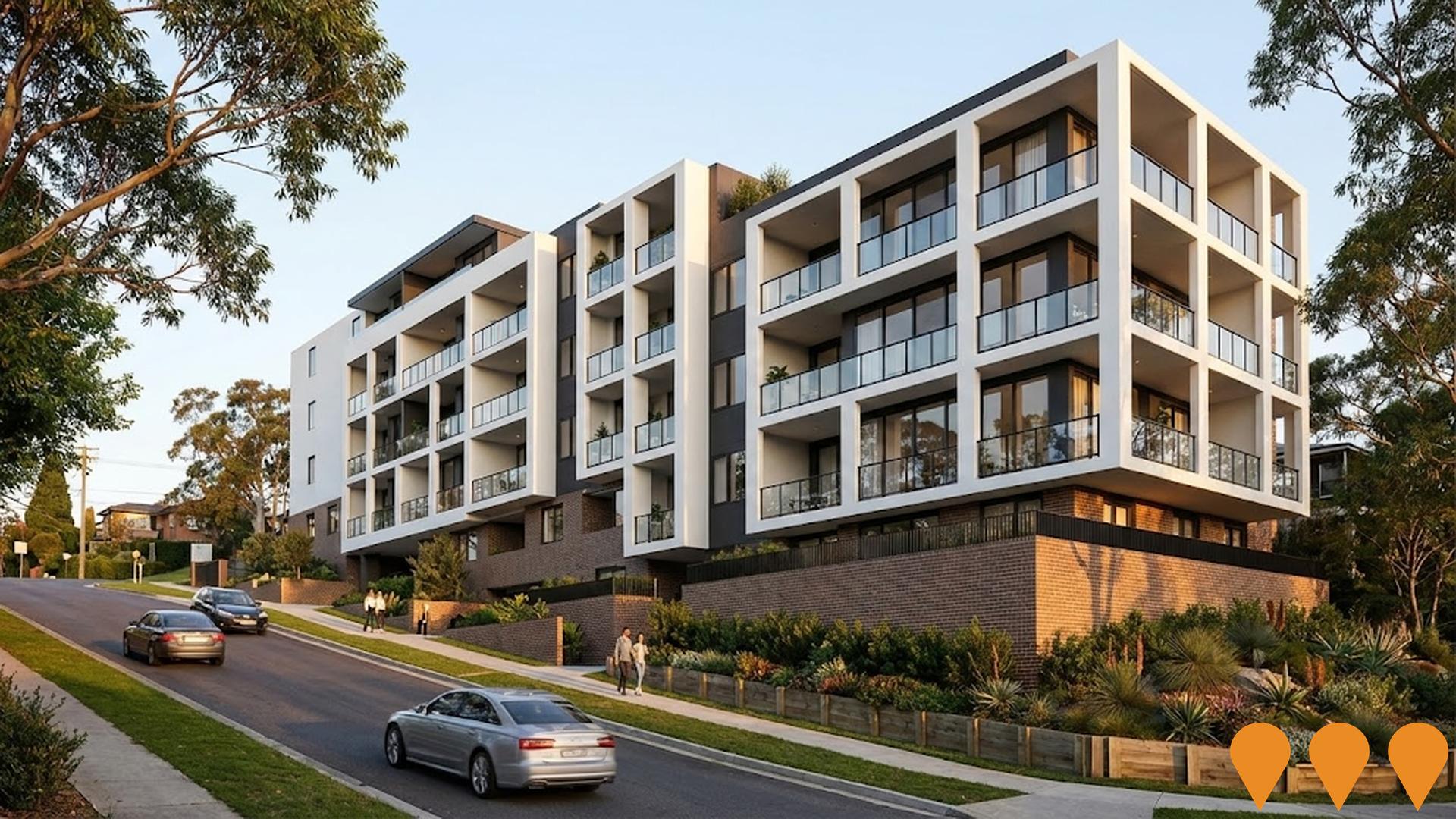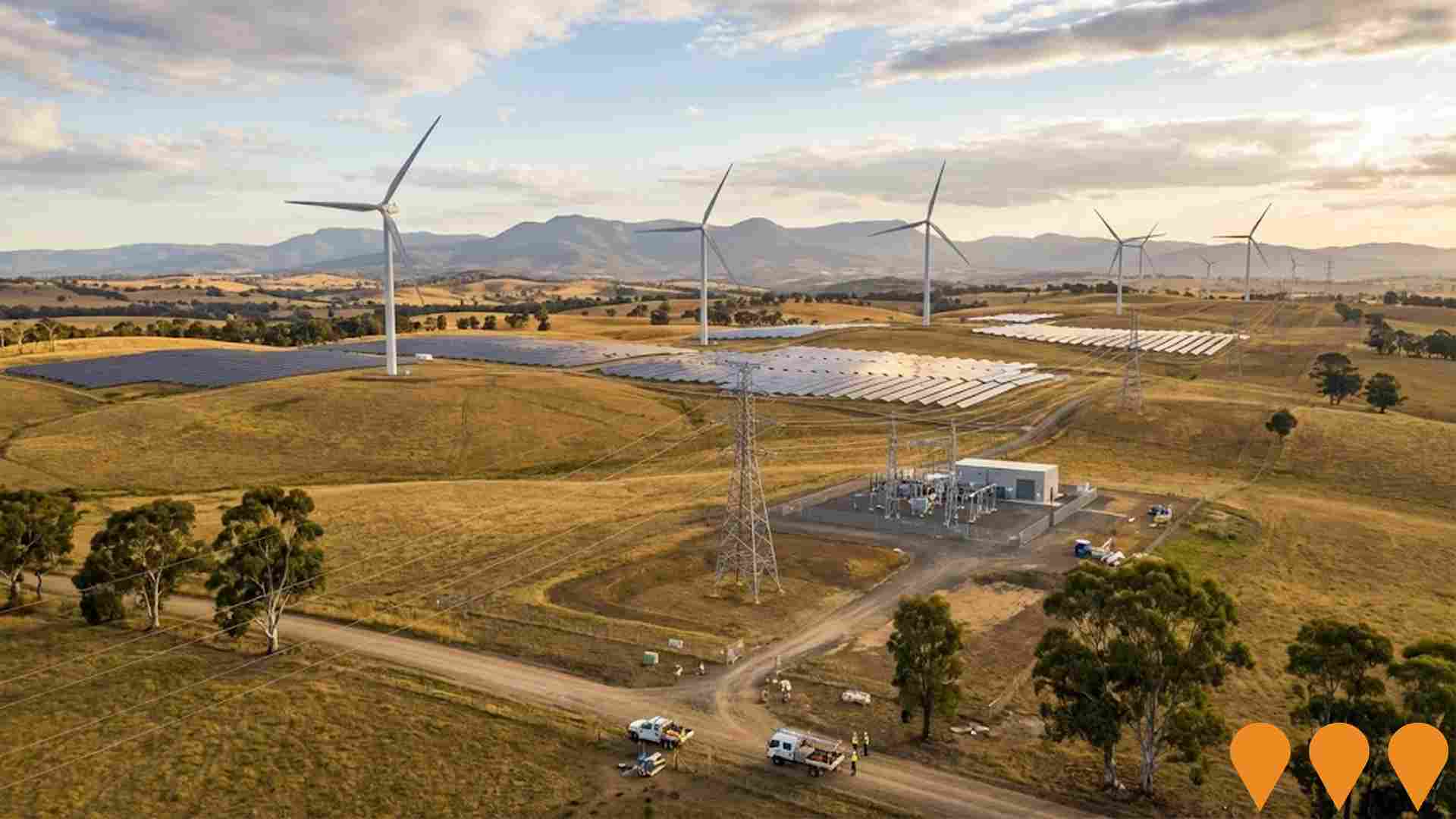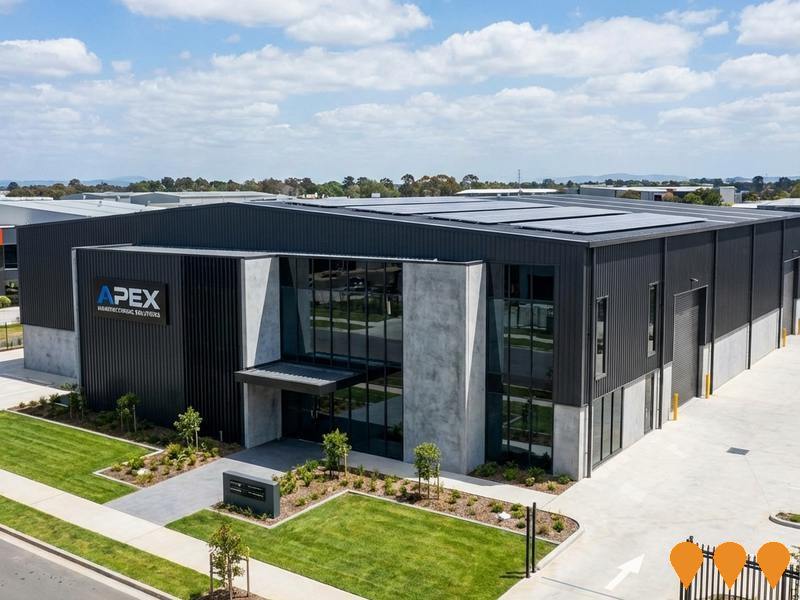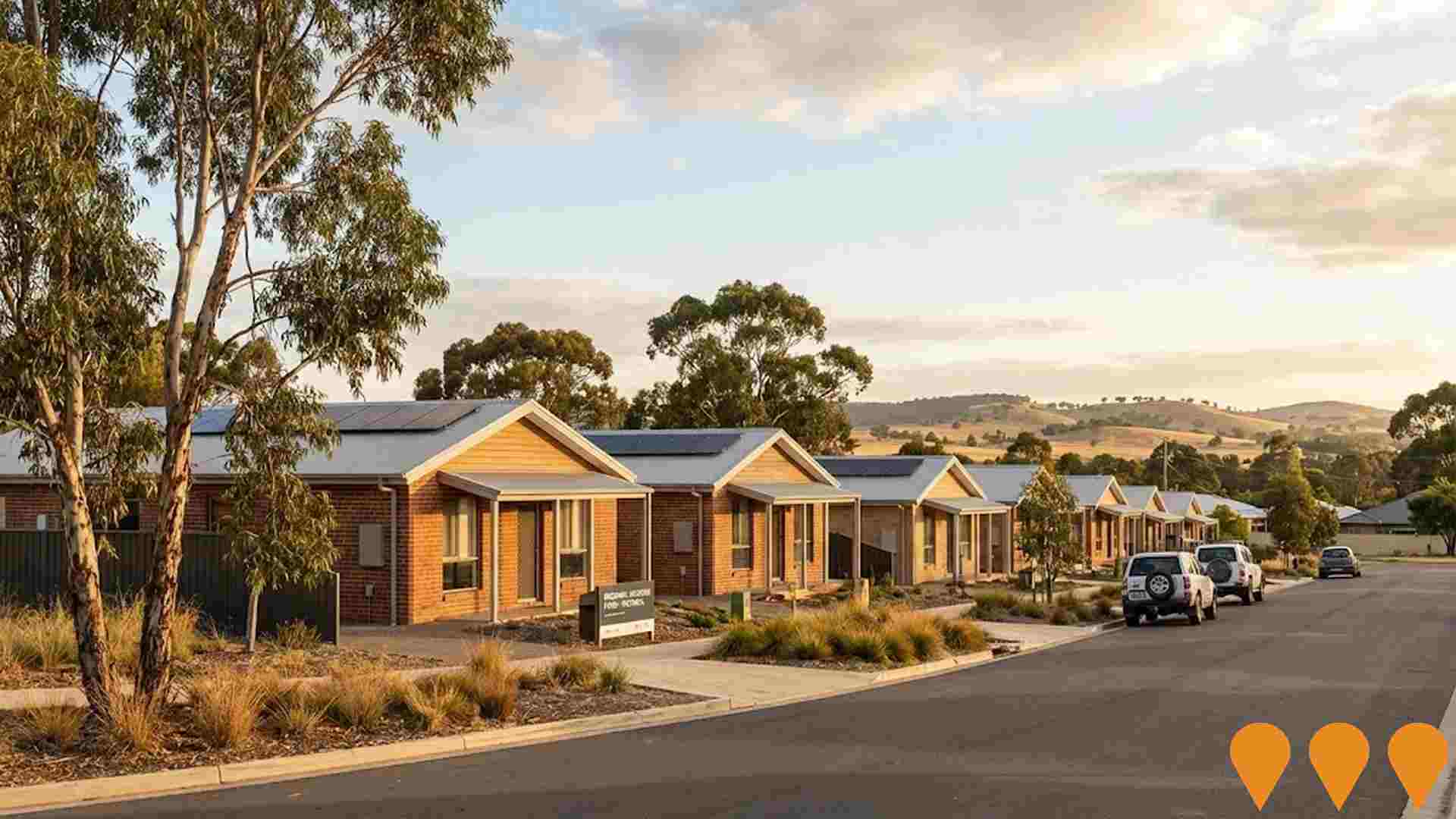Chart Color Schemes
est. as @ -- *
ABS ERP | -- people | --
2021 Census | -- people
Sales Activity
Curious about local property values? Filter the chart to assess the volume and appreciation (including resales) trends and regional comparisons, or scroll to the map below view this information at an individual property level.
Find a Recent Sale
Sales Detail
Population
An assessment of population growth drivers in Portland reveals an overall ranking slightly below national averages considering recent, and medium term trends
Portland's population was 11,230 as of August 2021. By August 2025, it decreased to around 11,217, a decrease of 13 people (0.1%). This change is inferred from the ABS estimated resident population of 11,180 in June 2024 and an additional 47 validated new addresses since the Census date. The population density was 175 persons per square kilometer as of August 2025. Over the decade prior to 2025, Portland's population grew at a compound annual growth rate of 0.2%, outpacing its SA3 area. Overseas migration was the primary driver of population gains during this period.
AreaSearch is using ABS/Geoscience Australia projections for each SA2 area, released in 2024 with a base year of 2022. For areas not covered by this data, AreaSearch uses VIC State Government's Regional/LGA projections from 2023, adjusted employing weighted aggregation methods to SA2 levels. Growth rates by age group are applied across all areas for years 2032 to 2041. Based on the latest population numbers, Portland is expected to increase by 799 persons to 2041, with a total increase of 6.8% over the 17-year period.
Frequently Asked Questions - Population
Development
Residential development activity is lower than average in Portland according to AreaSearch's national comparison of local real estate markets
Portland has recorded approximately 48 residential properties granted approval annually over the past five financial years, totalling 242 homes. As of FY-26, 16 approvals have been recorded. On average, between FY-21 and FY-25, 0.1 new residents arrived per new home constructed. This indicates that new construction is meeting or exceeding demand, providing more options for buyers and potentially facilitating population growth beyond current expectations.
The average value of new dwellings developed is $454,000. In the current financial year, there have been $8.4 million in commercial approvals, suggesting limited focus on commercial development. Compared to the rest of Victoria, Portland has recorded construction levels that are 25.0% above the regional average per person over the past five years.
This balances buyer choice with support for current property values, though recent construction activity has eased. New development consists of 81.0% standalone homes and 19.0% townhouses or apartments, preserving Portland's low-density nature and attracting space-seeking buyers. The area has approximately 290 people per dwelling approval, indicating a low-density market. Population forecasts suggest that Portland will gain 760 residents by 2041. Based on current development patterns, new housing supply should readily meet demand, offering favourable conditions for buyers and potentially facilitating population growth beyond current projections.
Frequently Asked Questions - Development
Infrastructure
Portland has limited levels of nearby infrastructure activity, ranking in the 17thth percentile nationally
Changes in local infrastructure significantly affect an area's performance. AreaSearch has identified four projects expected to impact this region: Portland Energy Park, Portland Renewable Fuels Project, Portland Foreshore Multipurpose Facility, and Portland North Employment Precinct. The following details the projects considered most relevant.
Professional plan users can use the search below to filter and access additional projects.
INFRASTRUCTURE SEARCH
 Denotes AI-based impression for illustrative purposes only, not to be taken as definitive under any circumstances. Please follow links and conduct other investigations from the project's source for actual imagery. Developers and project owners wishing us to use original imagery please Contact Us and we will do so.
Denotes AI-based impression for illustrative purposes only, not to be taken as definitive under any circumstances. Please follow links and conduct other investigations from the project's source for actual imagery. Developers and project owners wishing us to use original imagery please Contact Us and we will do so.
Frequently Asked Questions - Infrastructure
Low and Mid-Rise Housing Policy
State-wide NSW planning reforms via amendments to the State Environmental Planning Policy to enable more diverse low and mid-rise housing (dual occupancies, terraces, townhouses, manor houses and residential flat buildings up to 6 storeys) in well-located areas within 800 m of selected train, metro and light-rail stations and town centres. Stage 1 (dual occupancies in R2 zones statewide) commenced 1 July 2024. Stage 2 (mid-rise apartments, terraces and dual occupancies near stations) commenced 28 February 2025. Expected to facilitate up to 112,000 additional homes over the next five years.

Victorian Renewable Energy Zones
VicGrid, a Victorian Government agency, is coordinating the planning and staged declaration of six proposed onshore Renewable Energy Zones (plus a Gippsland shoreline zone to support offshore wind). The 2025 Victorian Transmission Plan identifies the indicative REZ locations, access limits and the transmission works needed to connect new wind, solar and storage while minimising impacts on communities, Traditional Owners, agriculture and the environment. Each REZ will proceed through a statutory declaration and consultation process before competitive allocation of grid access to projects.

Portland Energy Park
A 1,000MW / 2,500MWh battery energy storage park comprising four grid-scale co-located battery assets to capture excess renewable energy, enhance grid stability, and support Victoria's transition to net-zero emissions by avoiding approximately 66,900 tonnes of CO2 annually and powering 182,000 homes daily.

Portland North Employment Precinct
The Portland North Employment Precinct is a 10-hectare development aimed at boosting the local economy through job creation and business attraction. Bunnings Warehouse, the anchor tenant, opened in June 2025, creating over 50 ongoing jobs and supporting 50 during construction. Funded by $2.5 million from the Victorian Government, the precinct positions Portland as a key economic centre in south west Victoria.

Bulk Water Supply Security
Nationwide program led by the National Water Grid Authority to improve bulk water security and reliability for non-potable and productive uses. Activities include strategic planning, science and business cases, and funding of state and territory projects such as storages, pipelines, dam upgrades, recycled water and efficiency upgrades to build drought resilience and support regional communities, industry and the environment.

Portland Renewable Fuels Project
A world-scale renewable methanol development in Portland, Victoria, converting residual forestry biomass and renewable electricity into green methanol using a 200-megawatt electrolyser, producing 300,000 tonnes annually and avoiding 320,000 tonnes of CO2 emissions per year.

Portland Foreshore Multipurpose Facility
Refurbishment of the Portland Yacht Club and Portland Sport Fishing Club buildings on the Portland Foreshore to provide all-abilities access, meet building codes, comply with regulations, extend building life, and reduce maintenance costs.

Housing Manufacturing Hub
A $2.35 million manufacturing hub at Portland Airport developed by FormFlow to produce up to 200 relocatable modular houses per year, addressing housing shortages in Victoria's Great South Coast region. The project aims to create 50 direct and 150 indirect jobs but was paused in October 2023 due to industry pressures, with the lease remaining active as of 2025.

Employment
The employment landscape in Portland presents a mixed picture: unemployment remains low at 3.1%, yet recent job losses have affected its comparative national standing
Portland has a diverse workforce with both white and blue collar jobs, with essential services well represented. Its unemployment rate is 3.1%.
As of June 2025, Portland's unemployment rate is 0.6% lower than the rest of Victoria's rate of 3.8%, but its workforce participation is slightly lower at 53.0%. Key industries include health care & social assistance, manufacturing, and education & training. Manufacturing stands out with an employment share twice the regional average, while construction is relatively under-represented at 7.4% compared to Victoria's 10.4%. Many residents commute elsewhere for work based on census data.
Between June 2024 and June 2025, Portland's labour force decreased by 1.9%, employment declined by 1.2%, leading to a 0.6 percentage point drop in unemployment. In contrast, the rest of Victoria saw an employment decline of 0.9% and a slight rise in unemployment. Jobs and Skills Australia projects national employment growth of 6.6% over five years and 13.7% over ten years. Applying these projections to Portland's employment mix suggests local growth of approximately 5.7% over five years and 12.6% over ten years, though these are simple extrapolations for illustrative purposes only.
Frequently Asked Questions - Employment
Income
Income figures position the area below 75% of locations analysed nationally by AreaSearch
AreaSearch's latest postcode level ATO data for financial year ending June 2022 shows median income in Portland was $47,533 and average income was $58,362. This is lower than Rest of Vic.'s median income of $48,741 and average income of $60,693. By September 2025, estimated median income would be approximately $53,313 and average income $65,459, based on Wage Price Index growth of 12.16% since financial year ending June 2022. The 2021 Census data indicates household, family, and personal incomes in Portland are between the 13th and 16th percentiles nationally. The predominant income cohort in Portland is 28.3% (3,174 people) earning $1,500 - 2,999, similar to the broader area at 30.3%. Despite modest housing costs allowing for 87.9% of income retention, total disposable income ranks at just the 18th percentile nationally.
Frequently Asked Questions - Income
Housing
Portland is characterized by a predominantly suburban housing profile, with a higher proportion of rental properties than the broader region
Dwelling structures in Portland, as evaluated at the latest Census, consisted of 89.4% houses and 10.6% other dwellings. In comparison, Non-Metro Vic.'s dwelling structures comprised 93.1% houses and 6.8% other dwellings. Home ownership in Portland was at 42.6%, with the rest either mortgaged (31.9%) or rented (25.6%). The median monthly mortgage repayment in Portland was $1,105, higher than Non-Metro Vic.'s average of $1,083. The median weekly rent figure in Portland was recorded at $250, compared to Non-Metro Vic.'s $220. Nationally, Portland's mortgage repayments were significantly lower than the Australian average of $1,863, while rents were substantially below the national figure of $375.
Frequently Asked Questions - Housing
Household Composition
Portland features high concentrations of lone person households, with a fairly typical median household size
Family households account for 65.1% of all households, including 21.8% couples with children, 31.0% couples without children, and 11.7% single parent families. Non-family households constitute the remaining 34.9%, with lone person households at 32.2% and group households comprising 2.7% of the total. The median household size is 2.2 people, which aligns with the average for the Rest of Vic.
Frequently Asked Questions - Households
Local Schools & Education
Portland faces educational challenges, with performance metrics placing it in the bottom quartile of areas assessed nationally
The area's university qualification rate is 13.8%, significantly lower than Victoria's average of 33.4%. Bachelor degrees are the most common at 9.8%, followed by graduate diplomas (2.2%) and postgraduate qualifications (1.8%). Vocational credentials are prevalent, with 39.3% of residents aged 15+ holding them, including advanced diplomas (9.5%) and certificates (29.8%). Educational participation is high at 25.4%, with 9.4% in primary education, 8.0% in secondary education, and 1.9% pursuing tertiary education.
Portland has a network of 10 schools educating approximately 1,863 students, with typical Australian school conditions (ICSEA: 963) offering balanced educational opportunities. The educational mix includes 6 primary, 3 secondary, and 1 K-12 school. Note: for schools with 'n/a' enrolments, please refer to the parent campus.
Frequently Asked Questions - Education
Schools Detail
Nearby Services & Amenities
Transport
Transport servicing is low compared to other areas nationally based on assessment of service frequency, route connectivity and accessibility
Transport analysis indicates 60 active stops operating in Portland, consisting of bus services. These stops are served by 8 routes, offering a total of 254 weekly passenger trips. Transport accessibility is assessed as good, with residents typically situated 268 meters from the nearest stop.
Service frequency averages 36 trips daily across all routes, equating to roughly 4 weekly trips per individual stop.
Frequently Asked Questions - Transport
Transport Stops Detail
Health
Health performance in Portland is well below average with prevalence of common health conditions notable across both younger and older age cohorts
Health data indicates significant health challenges in Portland. Both younger and older age groups have notable prevalence of common health conditions.
Private health cover is relatively low at approximately 49% of the total population, which amounts to around 5,485 people. This figure is lower than the national average of 55.3%. The most prevalent medical conditions are arthritis and mental health issues, affecting 12.4 and 9.8% of residents respectively. Meanwhile, 60.0% of Portland's population claim to be completely free from medical ailments, compared to 62.4% in the rest of Victoria. As of September 2021, 26.1% of Portland's residents are aged 65 and over, totaling around 2,928 people. Despite this, health outcomes among seniors present some challenges but perform better than the general population in certain health metrics.
Frequently Asked Questions - Health
Cultural Diversity
Portland is considerably less culturally diverse than average when assessed alongside AreaSearch's national rankings for language and cultural background related metrics
Portland's cultural diversity was found to be below average, with 90.3% of its population being citizens, 90.0% born in Australia, and 96.3% speaking English only at home. The dominant religion in Portland is Christianity, comprising 45.0% of the population. Notably, Judaism, which makes up 0.1% of Portland's population, is overrepresented compared to the rest of Victoria, where it comprises 0.0%.
In terms of ancestry, the top three groups in Portland are English (33.1%), Australian (32.3%), and Scottish (9.4%). There are also notable differences in the representation of certain ethnic groups: Dutch is overrepresented at 1.7% compared to the regional average of 1.4%, German at 4.3% versus 4.8%, and Maltese at 0.5% versus 0.4%.
Frequently Asked Questions - Diversity
Age
Portland hosts an older demographic, ranking in the top quartile nationwide
Portland's median age is 47 years, which is significantly higher than the Rest of Vic. average of 43 years and substantially exceeds the national average of 38 years. The age profile shows that those aged 65-74 years make up a particularly prominent group (14.8%), while those aged 25-34 are comparatively smaller (9.9%) than in Rest of Vic.. This concentration of those aged 65-74 is well above the national average of 9.4%. Between 2021 and present, the age group of 75 to 84 years has grown from 7.3% to 8.2% of Portland's population. Conversely, the age group of 45 to 54 years has declined from 13.1% to 12.1%. By 2041, Portland is expected to see notable shifts in its age composition. Notably, the 25-34 age group is projected to grow by 32%, adding 352 people and reaching a total of 1,466 from the current figure of 1,113. Meanwhile, the 5-14 and 15-24 age groups are expected to experience population declines.



